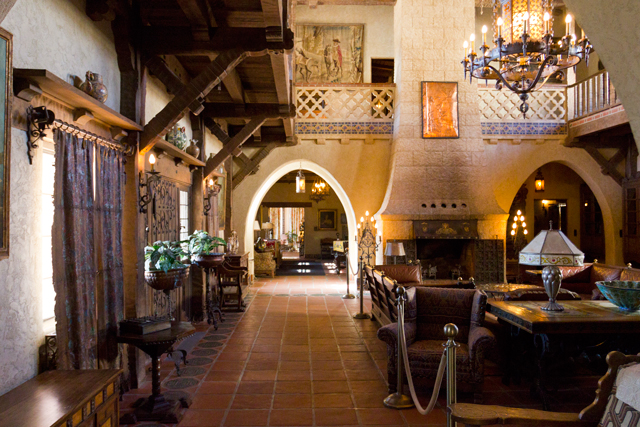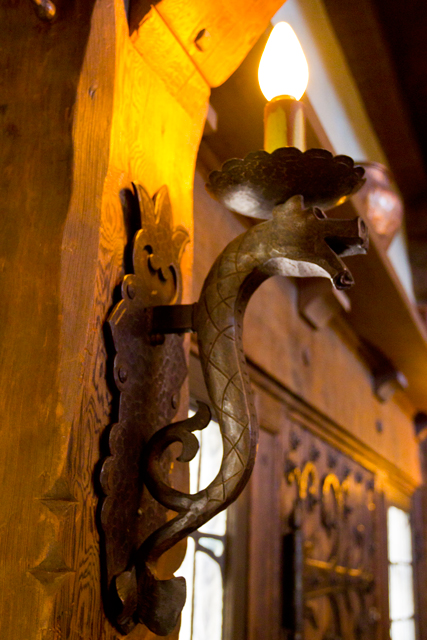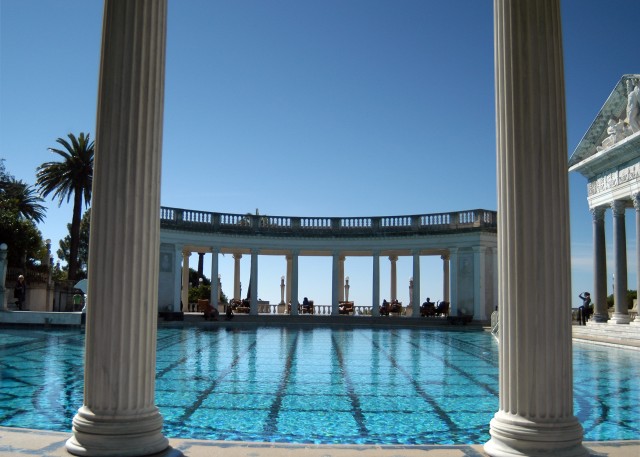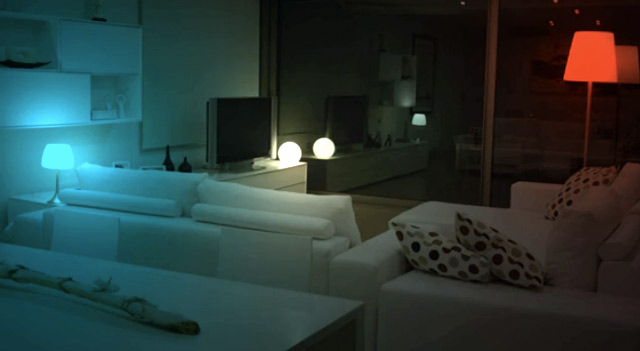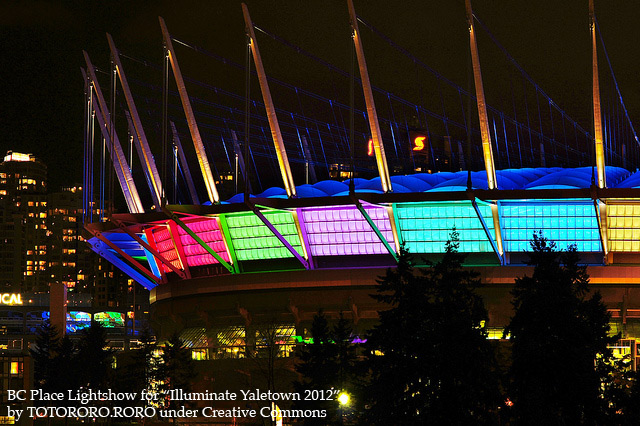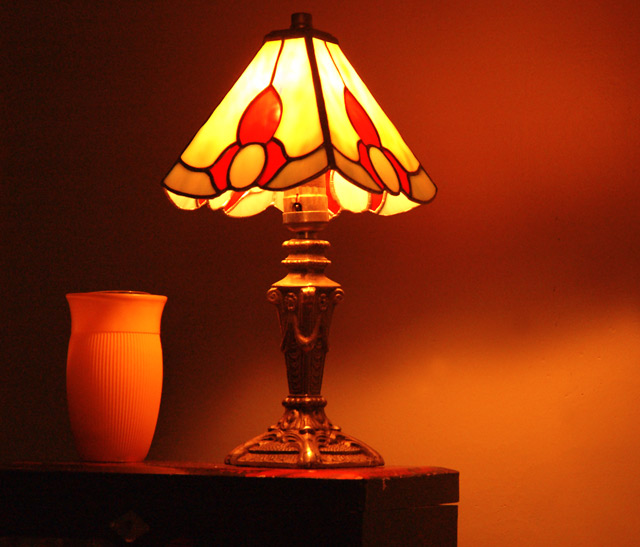Category Archives: Things We Like
Things We Like: Spanish Colonial Revival
Post by Kyle St. Romain.
Having just returned home from a long weekend at Death Valley National Park, I have to say that it’s nothing short of awesome. Whether you’re a geologist who wants to be stumped or a tourist looking to escape from the ordinary, Death Valley offers something for everyone. I wasn’t as excited as I should have been to visit at first, but now that we’re home I find myself wanting for dry desert air and tranquility that Los Angeles simply cannot provide. I highly recommend you consider seeing it for yourself.
One of the more popular attractions in Death Valley is Scotty’s Castle, which is sometimes referred to as the Hearst Castle of the desert. Formally called Death Valley Ranch, Scotty’s Castle got its name from one of Death Valley’s most famous inhabitants, Walter Scott —a con man of sorts. You can read more about the story here.
Scotty’s Castle was built in a Mission Revival/Spanish Colonial Revival architectural style, which I’ve long been a fan of. Although, I usually lump the general style into what I call “Mediterranean looking homes.” My girlfriend, on the other hand, is not as much of a fan of this style. However, after visiting Scotty’s Castle, we finally agreed that it would make a superb looking home.
While my future home likely won’t be as grand as Scotty’s Castle, there are a number of important elements inherent to any Mission Revival/Spanish Colonial style home: white plaster or stucco walls, exposed wooden beams, red clay roofs, iron trim, decorative terracotta floor tiles, and a relatively open floor plan.
The furnishings in a Mission Revival home are equally as important as the architecture. The furniture should be predominantly made of solid wood, complimented with rich, earth-colored fabrics. And since tile floors and stucco walls can be a bit cold on there own, you’ll want to use decorative rugs and heavy fabric window treatments to add some much needed warmth.
In the bedroom, a wooden or wrought iron bedframe works best, and plush bedding helps soften the sharp lines of the bed. Iron wall sconces and floor lamps are also a great way to enhance the look of your Mission Revival home while adding some much needed light. To me, you can’t go wrong erring towards more gothic/medieval style lighting options that look like they came out of an old European castle. To really tie the whole look together, think about sticking with a consistent theme throughout the home. For example, all of the iron trimming in Scotty’s Castle featured a dragon; a relatively small detail that really stood out once noticed.
Since the possibilities of designing your own Mission Revival home are endless, the best way to perfect the look in your own home is to see what other designers have done. Houzz has an excellent gallery of Mission Revival homes to admire.
What’s your favorite architectural style? Did I miss any important elements of Mission Revival? Share your thoughts in the comments below.
Things We Like: San Francisco Micro Living
Post by Kyle St. Romain.
How small is too small when it comes to the size of your apartment? Sure a one bedroom would be nice and a three bedroom would be even better, but you could probably get by just fine as a single adult with a studio. What about a micro studio?
Popular in urban centers like London and Tokyo, so-called micro studio apartments have developed to meet the needs of cost conscious, single adults who want to live in the city. While micro studios aren’t the epitome of luxury living, they provide all (or most of) the creature comforts an urban explorer needs.
Embracing the trend towards smaller, more affordable urban apartments, San Francisco city officials recently passed an ordinance that allows the development of what will be some of the smallest micro studios in the world. At 220 square feet these new micro studios will feature a bathroom, closet, and integrated living space that serves as the kitchen/dining room/bedroom/living room (though not all at the same time as the bed has to be folded up before the dining table can be used). To meet code, each unit must have at least 150 square feet of integrated living space, a bathroom and a closet. Space will be tight! The plan calls for an initial 375 test units to be built before finalizing the ordinance.
As you can imagine, furnishing such a small space requires a lot of careful planning. A while back, I wrote an article on maximizing bedroom space in a small apartment, and many of those tips are equally applicable to micro apartments—you just need to scale down the furniture even more.
The bed is the first thing you’ll need to plan for in a micro apartment, since even a twin-sized bed can take up just under 21 square feet, or 15 percent of your total living space. A Murphy bed is a given to help maximize your space in a micro apartment. The dining table is also another space hog. However one clever combination of sleeping/dining area had the Murphy bed fold onto a support table, which doubled as a dining table when the Murphy bed was folded up. I thought it was a pretty smart use of space.
If you want to read more about San Fran’s micro apartments click here.
Could you make it in a micro studio? Maybe they could be marketed as a luxurious alternative to Alcatraz. Let us know what you think in the comments below.
Things We Like: Grand Bedroom Design at the Hearst Castle
Post by Kyle St. Romain.
If you enjoy experiencing high design, then the tour of the Hearst Castle in San Simeon, California should be on the top of your to do list. Two weekends ago, I had the opportunity to visit the Hearst Castle for myself having first learned about it from an episode of the History Channel. Pictures hardly do it justice, and the drive up there is breathtaking.
If you don’t know about the Hearst Castle, it is the largest private estate in California. Donated by the Hearst Corporation in 1957, the castle was originally constructed by William Randolph Hearst and designed by renowned architect Julia Morgan in the early to mid 1900s. It is the west coast’s answer to the Biltmore estate in North Carolina, though the climate is much nicer in California and the ocean views are unmatched.
The Hearst Castle took over 28 years of continuous construction before bankrupting WR Hearst, and it was never completed. It is estimated to have cost nearly $10,000,000 (about $133 million in 2011 dollars); however, the exact cost of construction is unknown. The castle, which is more a village than anything else, features 56 bedrooms sprawling over 100 acres. So, as you can imagine, I got to see a lot of different bedrooms on my tours; each one designed with its own unique theme. As a regular writer here at the Charles P Rogers blog, I was sure to take a lot of pictures to share with you.
What surprised me the most about the bedrooms at the Hearst castle is their size. I knew they were going to be luxuriously appointed, but didn’t imagine them being so small. The beds are even quite small by today’s standards. Why is this? Space was certainly not an issue, as the entire estate encompasses more than 90,000 square feet, so it had to be something else.
While I don’t have the architect’s notes to give you a definitive answer as to why the bedrooms were designed so small, my guess is that it is a combination of utility—bedrooms had a more a singular purpose then—and design conventions of the era. Also, while the estate featured state-of-the-art electric heaters, it gets pretty cold on top of the mountain during the winter, and a smaller bedroom would have be easier to keep warm.
I left the castle dreaming of one day owning a home as grand as one of the many guest cottages scattered throughout the property. However, that is unlikely as I imagine international treaties prohibit the importation of the antiquities you’d need to decorate your bedroom in similar style today as many of the architectural features were salvaged from European churches.
If you’ve visited the Hearst Castle, we’d love to hear what you think. We also welcome ideas about other marvelous homes to visit. Share your thoughts in the comments below.
Things We Like: Smart Lighting
Post by Kyle St. Romain.
If you recall, a while back I wrote about the basics of bedroom lighting. In that article, I went over some of the ways you can use lighting to change the look and feel of your bedroom. Basically, changes in the brightness, color, and height of your lighting all influence the way we experience a room.
In my quest to help you make the most out of your bedroom lighting (and lighting in other rooms) I’m going to share a new type of light bulb that recently came across. Meet the Philips Hue, which is more of a light system than it is a light bulb. Let me explain.
The Philips Hue is an LED light bulb and lighting control system that gives you the ability to adjust almost every aspect of your lighting (save physically moving the fixture). The bulbs screw into your existing light fixtures and connect to your home’s Wi-Fi through a bridge. The system allows you to control your lights remotely from your iPhone; and I’m not just talking simple on/off control. These bulbs also allow you to change the color of your light.
In addition to controlling the on/off function and color of your lights, Philips Hue also lets you adjust the brightness of your lighting, so you’ll no longer need to install a hard-wired dimmer switch. The system also has a number of pre-set selections (called light recipes) that adjust the color and brightness of your lighting for task specific purposes, such as: reading, relaxing, or working (concentrating). Philips even claims these light recipes are scientifically proven to improve your ability to focus and relax.
In the bedroom, the Philips Hue really shines. The bulbs can set on a timer that gradually brightens and adjusts the color of the light to simulate the sun coming up to help you wake up more peacefully. No more squinting (and dreading) when the lights suddenly come on!
Since the bulbs LED they consume about 80 percent less energy than traditional bulbs and last about 15 years. While they are a bit more expensive than regular bulbs (even energy efficient bulbs), it’s hard to put a price on the cool factor. The starter kit includes a wireless bridge that handles up to 50 bulbs and three bulbs. It sells for $199. Additional bulbs can be purchased for $59 each. A bit pricey, but much cheaper than other color changing LED systems I’ve shopped for before.
For more information, check out the official Philips Hue Website. The only question left is: How will you incorporate these new lighting possibilities into your bedroom? Share your ideas in the comments below.
Things We Like: Adjusting Your Computer Screen For Better Sleep
Post by Kyle St. Romain.
If you’re like me, you probably spend an inordinate amount of time in front of a computer screen. It’s an unfortunate consequence of living in a digital world, and our eyes bear the brunt of the pain. Think of your computer screen as a big light bulb that you stare at for hours on end. It’s not that much different than staring at a regular light bulb, except it’s not as bright and we’ve grown used to it — still bad for your eyes.
The effects of working in front of a computer screen are magnified at night. Many people will lower the brightness of their screen to make it easier on their eyes after sundown, but a dimmer screen only solves part of the problem. In addition to adjusting the brightness of your screen, you should also adjust the color. Let me explain.
Natural daylight registers at around 6,500K, while incandescent and fluorescent bulbs produce light somewhere between 2,700 and 3,300K. A main difference between color temperatures is that higher temperatures appear bluer, while lower temperatures appear more yellow or red.
Computer screens are designed to work best with daylight, and produce a bluer light between 5,500 and 10,500K. However, when you’re working under artificial light at night, the color light produced by your computer screen clashes with the ambient light in the room; it irritates our eyes and our brains.
To help equalize the light temperatures, developers have created programs that gradually lower the temperature of your computer’s backlight according to the time of the day. During normal business hours you won’t notice much of a difference, but if you flip your laptop open at night you’ll notice a red hue to your screen. This change takes some time to get used it, but once you try it, you probably won’t want to switch back. I adjusted to it after only a couple of nights, and can’t stand to look at unadjusted screens anymore.
In addition to reducing strain on your eyes, proponents of these programs also argue that adjusting your screen’s temperature at night helps you sleep better. First, your eyes will feel rested (I hate tired eyes). Second, your body is more used to lower temperature light at night, because our biological clocks (circadian rhythms) are quite sensitive to light. When it’s dark outside, your body produces melatonin, which helps you fall asleep. Staring at a bright computer screen disrupts this process, and can actually make you more alert. Try sitting under a full spectrum light at night, you’ll probably never fall asleep.
While the best way to sleep better is to completely avoid the computer at night, we don’t always have this luxury. So, if you find yourself needing to burn some midnight oil, try lowering the temperature of your computer screen. Programs like f.lux are free, and available for Mac, Windows, and Linux operating systems. There are other programs available that do the same thing, but f.lux seems to be the most popular. It also adjusts your computer screen automatically based on your location, which is a nice touch. After a while, you probably won’t even notice the transition anymore.
Have you tried it? Let us know what you think about the comments below.


